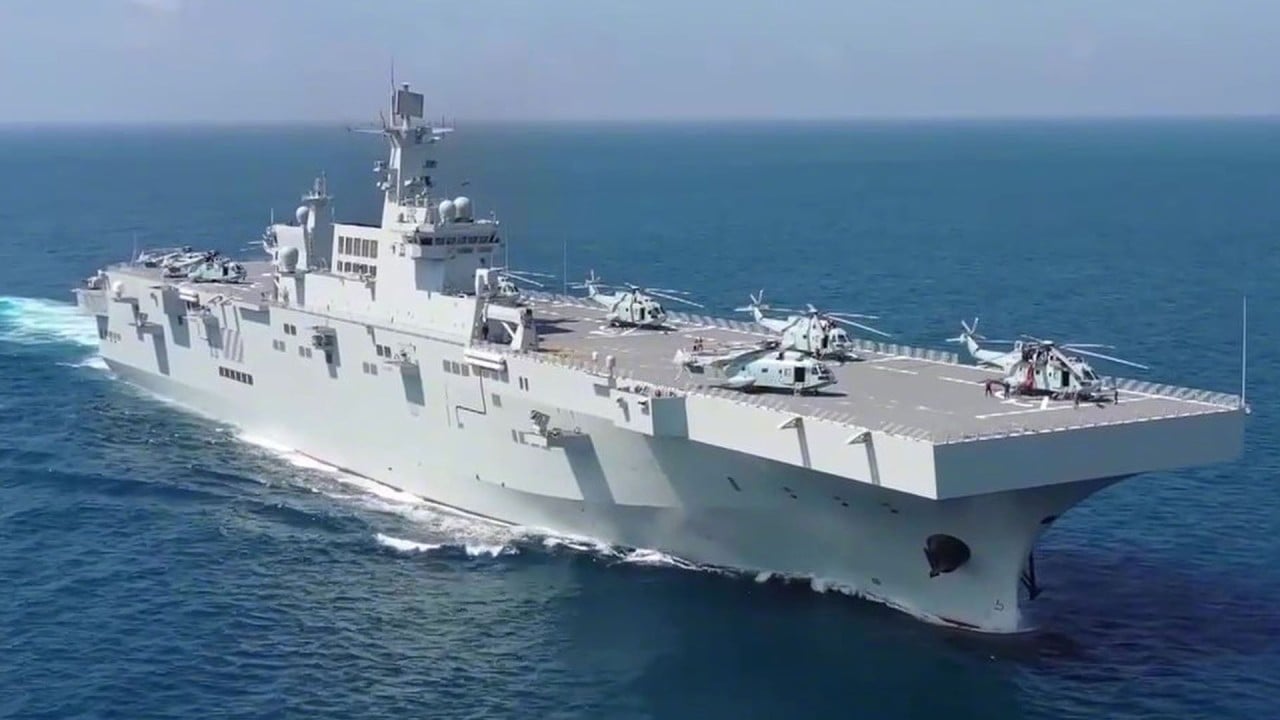
Chinese military says it has a strategic air force – experts disagree
- PLA Air Force spokesman Shen Jinke has said that the description now applies to China
- But the country lacks the bombers and transport aircraft needed to have true long-range assault capability, experts say
Their assessment followed Chinese air force spokesman Shen Jinke’s assertion on Tuesday that, with advanced warplanes such as the J-20 and Y-20 entering service, China passed the threshold for having a strategic air force.
Shen’s statement was an indication of the Chinese military’s own assessment of its progress, having described itself only as “becoming more strategic” six years ago, but “strategic” status has various requirements.
China eyes mega spacecraft spanning miles in crewed mission push
Shen made the statement at a press conference previewing the China International Aviation and Aerospace Exhibition at Zhuhai – China’s biggest air show – to be held later this month. There are expectations that China may unveil its next generation stealth bombers, such as the H-20, at the show.
Over the years, China has launched advanced aircraft, such as its H6 bombers. In July, China said it had tested an experimental spacecraft, laying the foundation for development of a reusable hypersonic space plane.
But Ridzwan Rahmat, principal defence analyst at military publisher Janes, said China still lacked core abilities in comparison with major powers including its main rival the United States.

01:50
China’s most advanced amphibious assault ship likely to be deployed in disputed South China Sea
“Being a strategic air power allows a country to achieve specific political results via the deployment of its aircraft,” Rahmat said. “To achieve such an outcome, the air force must be able to conduct the full spectrum of operations in modern warfare, including carrier strike group operations.
Beijing-based military expert Zhou Chenming took a similar view, saying that China’s air force was not truly strategic, because it lacked the transport aircraft and bombers needed to perform long-distance attacking operations.
“The United States has B-52 long-distance subsonic strategic bombers to attack targets in distant places, and Russia has the Tu-95 strategic bomber and missile platform, and Tu-160 supersonic strategic bombers,” Zhou said. “Compared with them, China lacks long-distance attacking capabilities, which hinders its air force’s aim to be strategic.
“Also, China doesn’t have transport aircraft with around-the-globe delivery ability, whereas the US has different types of transport planes, such as the C-17 and the C-4130.”
Zhou described those as two core indicators of whether an air force was strategic.
US vs China: who has the stronger military?
Former Chinese military instructor Song Zhongping agreed, and said China’s air force was more likely to conduct short-range rather than long-distance activities.
“China’s military position is still largely defensive,” he said. “Even with new aircraft entering service each year, Beijing only uses them to safeguard national sovereignty, security and interests.”
Besides aircraft, the air force had adopted other weapons that boosted its abilities, such as surface-to-air missiles, Song said.
The country’s biggest transport aircraft is the Y-20, which can carry out long-distance air transport tasks such as hauling military supplies and personnel. The plane was once spotted flying in formation in the South China Sea region, sparking fears from Southeast Asian nations.
Announced by the People’s Liberation Army (PLA) in 2016, China’s next-generation Xian H-20 strategic bomber has yet to be unveiled. It was described as a possible game-changer during warfare, because it would be capable of attacking American nuclear-powered aircraft carriers.
Once widely dismissed as a backward force, equipped with antiquated aircraft flown by poorly trained pilots, the Chinese air force has undergone significant modernisation.
The US defence ministry’s annual report to Congress last year said China had about 2,000 combat aircraft. “The [PLA Air Force] is rapidly catching up to Western air forces across a broad range of capabilities and competencies,” it said.

